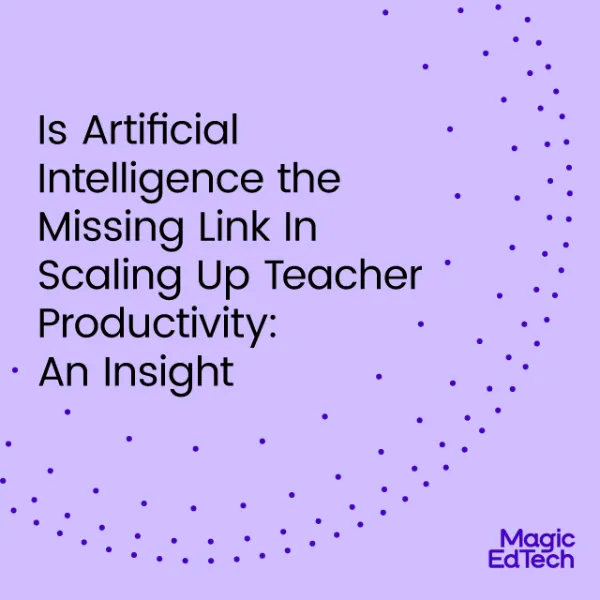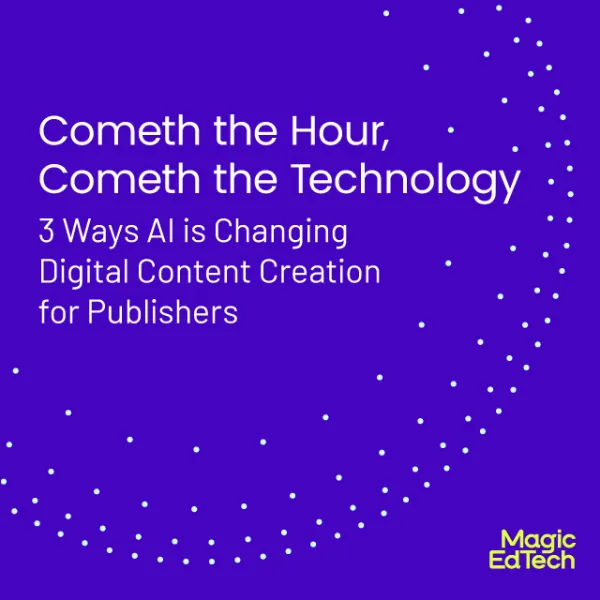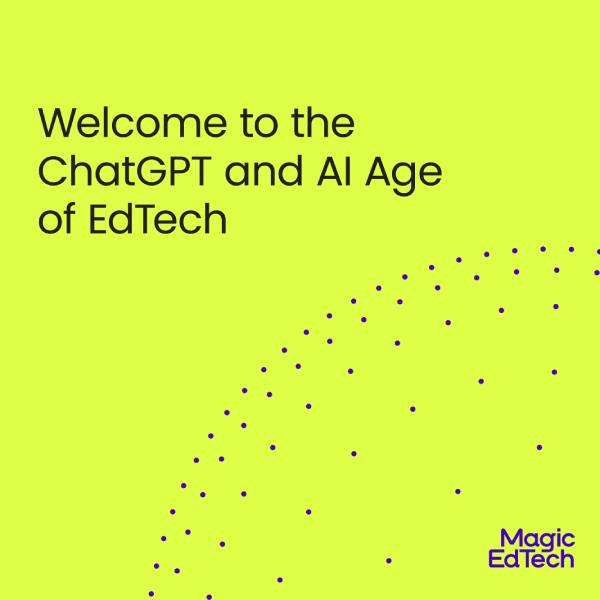AI Learning Solutions for Workforce Development
- 29 May, 2023
- Reading Time: 4 mins
We had the pleasure of catching up with Josh Jarrett, SVP of Strategy at Wiley, in our latest Tech in EdTech podcast episode. Throughout his career, Josh has helped build products, programs, and relationships that have helped hundreds and thousands of people earn degrees and secure meaningful work. In this episode, we delved into the applications AI for learning and workforce skill development.
When asked about the use of AI in education, Josh draws analogies from past technologies like calculators, the internet, and Wikipedia, stating that initial concerns were overcome and equilibrium was reached. Even if educators may initially be slow to adopt new technology, they will eventually embrace AI and set clear guidelines for its use. He sees AI technology, such as Chat GPT, as a powerful tool for creating educational content, enhancing personalized learning experiences, and motivating students.
Personalizing the Learning Experience
The responsible use of AI in education can unlock real benefits for learners and organizations. As it stands, AI can help in two significant areas: learning and talent discovery. It can create personalized learning experiences that can help students achieve better outcomes. It can also provide individualized tutoring and explanations tailored to each student’s needs. “AI has the potential to create truly personalized learning experiences, where learners can ask a Generative AI engine to explain complex concepts in a way that resonates with their background and receive a structured tutored experience.”
Guardrails and Ethics for AI in Learning
However, Josh acknowledges the risks associated with AI. It is imperative to set guardrails and ensure quality control when using AI in education. Some of the drawbacks of AI in education include shortcuts in the learning process, cheating, confusion for learners due to biased or false information, and the potential for exacerbating educational inequality. The impact of AI on equity in learning can be both positive and negative. While it can create opportunities for access and personalization, it may also widen the gap between those with and without resources. “While the aspiration is to give every learner a private personalized tutor, the reality is that solutions will first benefit those who already have advantages before reaching everyone else and closing the gaps.”
How AI Learning Solutions Can Help Workforce Development
For talent discovery, AI predictive hiring engines and soft skill assessments can help connect individuals with relevant opportunities. Overall, Josh Jarrett sees the potential benefits of AI in workforce skill development but emphasizes the need for responsible implementation and addressing potential risks and equity concerns.
You can catch this episode at:
https://www.magicedtech.com/podcast/how-big-will-the-ai-in-education-revolution-get/
Read on further for more ways that AI could potentially power the Learning Experience to help develop a more skill workforce.
1. Personalized Learning Paths
AI tools can create personalized learning paths. They can do this by assessing an individual’s existing skills and learning style and recommending the right courses and resources. These personalized learning paths can help develop the skills required to successfully transition to the workforce.
2. Adaptive Assessments
Limited item banks is one of the biggest reasons for non-adoption of computerized adaptive assessments. Employing the AI capabilities of adaptive assessments can help autogenerate question banks. Also, by dynamically adjusting the difficulty level, these assessments provide timely feedback – allowing for timely interventions in skill development.
3. Competency Mapping
AI tools can help map the required competencies for different job roles and industries. This will help individuals understand the skills they need to acquire to be job-ready and provide a clear roadmap for their learning journey. AI can also provide up-to-date information on job market trends, in-demand skills, and emerging industries. This can help learners align their skill development efforts with current market needs, increasing their employability.
4. Interactive Content and Simulations
The use of AI’s content generation capabilities can be used to scale up the creation of interactive learning materials, including videos, simulations, and gamified modules. These resources will facilitate hands-on practice and experiential learning, allowing individuals to develop practical skills and knowledge.
5. Soft Skills Development
Recognizing the importance of soft skills in the workforce, the tool would include modules focused on communication, teamwork, problem-solving, adaptability, and leadership. It would provide opportunities for individuals to enhance their interpersonal skills, emotional intelligence, and critical thinking abilities.
Talk to us to know more about how AI can power your enterprise-wide needs for learning.






